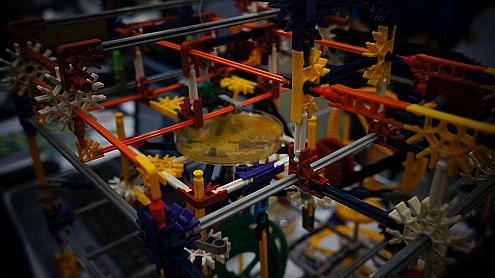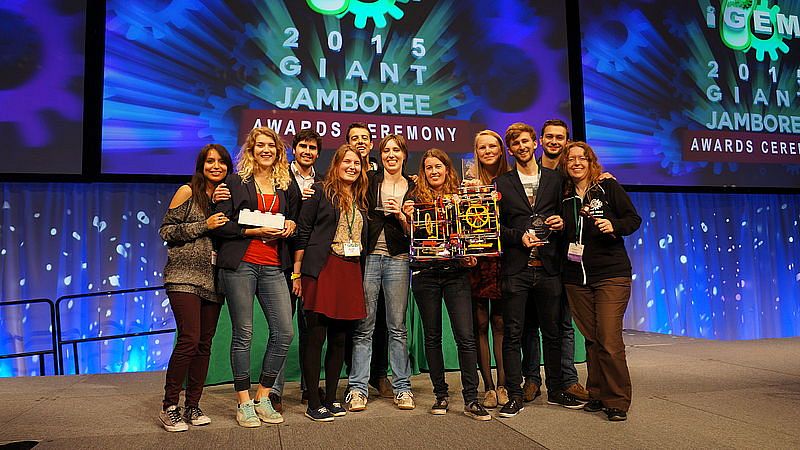The student team from Project Biolink had a successful weekend at the iGEM finale in Boston from 25-28 September 2015. They were awarded four prizes including the Grand Prize Undergraduate overall prize.
iGEM is an organisation dedicated to education and competition in the field of synthetic biology, which is the making of new biological substances such enzymes, cells and drugs. Last weekend iGEM held its annual competition and TU Delft was one of 280 competing teams of the students. The team, comprised of eight TU Delft students and one from Rotterdam Technical College, had designed a way to make standardised bacterial biofilms using a 3-D printer made from the children’s construction kit, K’NEX.
“Biofilms are naturally formed by some bacteria as a way of resisting attack”, said team member Anne Rodenburg, “Think of the plaque on your teeth – that’s a biofilm.” And a wide variety of microbial infections of the body involve biofilms. The bacteria grow tiny threads called nanowires on their surface, which enable them to hold on to each other forming thin but tenacious layers. In an effort to try and fight these biofilms, healthcare and pharmaceutical companies grow their own in the lab but until now, these synthetic biofilms have been too flat and irregularly sized. “So what the industry really wanted was to be able to control the growth of biofilms to a standard size and strength”, explained Rodenburg.
The first step involved genetically modifying various types of bacteria to produce biofilms. “Then came the idea of building a 3-D printer create layers of biofilms”, said Rodenburg. However, commercial 3-D printers are not only expensive, but they need to operate at the sort of temperatures that would kill bacteria. So the TU Team Biolink decided to build their own printer: “We just needed to make a simple design that would go back and forth in different directions, gradually building up layers of bacterial biofilms in hydrogels.” And they soon discovered that the best way to build a 3-D printer was using the children’s construction toy, K’NEX.


The printer has an ink jet that squirts E-coli bacteria in sodium alginate solution onto a petri dish containing agar-agar. The calcium in the agar connects to the alginate, turning it into a hydrogel that fixes the bacteria temporarily. Meanwhile the bacteria sprout nanowires, interconnecting them in a dense network. Adding a sodium solution removes the calcium and reverses the jellification, keeping only the bacterial network (or biofilm). The students have demonstrated they can print another layer on top of a previous one without a mixing zone between the two separate layers.
The jury at the iGEM Jamboree in Boston last weekend, where 259 teams from all over the world attended, was quite impressed with the quality of the work by the Delft team. They were awarded the Best Hardware award for a team that had produced the best hardware for synthetic biology (in this case the bacterial ink jet printer). They also won the prize for the Best Wiki (a website required to offer information to next generations of iGEM students) and the Best Applied Design (tuned to solve a real-world problem: dealing with biofilms).
Best of all, they were awarded the Grand Prize for Undergraduate, known as the BioBrick Trophy, for their overall performance.



Comments are closed.